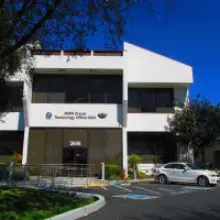SHERIDAN, WYOMING – July 2, 2025 – When BMW opened its Technology Office in Palo Alto, California, in 1998, it wasn’t just a move west — it was a bold leap into the heart of innovation. Nestled in Silicon Valley, the new office gave BMW a front-row seat to the digital revolution, allowing it to reimagine how technology could transform the driving experience and keep the brand ahead of the curve.
A Visionary Start in the Heart of Silicon Valley
BMW executives recognized early that our digital lives were rapidly becoming inseparable from our daily routines. CEO Helmut Panke foresaw that technology would soon move from our homes and offices straight into our cars. That vision led to the opening of the BMW Technology Office at Stanford University on November 18, 1998.
“Before we opened the office, people would talk about how there was so much innovation coming from the West Coast. What is so special out there? Does it happen accidentally, or is there a reason for this? Do they do something differently than how we do it here in Germany? Let’s expose our people to this environment and see what happens,” said Dr. Joachim Stilla, who’d run the Technology Office from 2003 to 2005.
Trailblazing Innovations That Redefined Driving
BMW’s Palo Alto team quickly set to work, introducing groundbreaking features that changed the industry. In September 1999, less than a year after the Tech Office opened, BMW revealed its Z9 Concept at the Frankfurt Auto Show with the revolutionary iDrive controller.
“The basic idea [for iDrive, as the system became known] comes from two graduates of Stanford University, who originally developed the multifunctional control element in 1999 as a smaller version of control sticks for flight simulators,” declared a 2001 BMW press release. “We didn’t invent iDrive, but we had a contribution,” Stilla said.
The team also brought Bluetooth connectivity into BMW cockpits in 2002. “At Palo Alto, we have the freedom to try things out. This is one of the most flexible places in the BMW world,” said Stilla in 2005.
Bridging BMW and Apple: The Birth of iPod Your BMW
Perfecting the human-machine interface became central to the Tech Office’s mission. “He took a picture of all these white cables and said, ‘I don’t want this. I want to connect the iPod to the head unit and put the iPod in the glove box,’” said Patrick McKenna, then a manager within BMW’s Marketing Department. “We put Stan together with our tech engineers, and they found the solution pretty quickly. It was called iPod Your BMW, and it basically fooled the head unit into thinking there was a six-disc changer in the glovebox, but it could only access six BMW-labeled playlists.”
“iPod Your BMW really opened the doors to a regular, continuous dialogue with Apple from that point forward,” McKenna said.
Smartphones Change the Game
Stefan Durach, who led the Tech Office from 2008 to 2011, explained the transformation smartphones brought: “In the past, you would buy your BMW, and it would have a certain feature set that would remain stable over its lifetime. The features and the interaction with the car never changed, and it was the same with phones from Nokia or other players.”
“When the iPhone hit the market, it was a completely different game. You just get a piece of hardware, and you customize it over time. You get new features, new products, new experiences. We wanted to participate in this, offering new features in the car, and we thought the phone might be a good bridge to get access to the music apps, and all the stuff they built at that point in time.”
“The automotive industry, and BMW in Munich, is dominated by precise planning, because you have to prepare your manufacturing to assemble the cars for a seven-year lifecycle: to build up stock of parts, to build the mechanical tooling, etc. It takes time,” Durach said. “The tech industry side has a super, fast-turning way of developing product, and if you want to work in the auto industry and technology at the same time, you have to define the right environment where you can experiment, try things out. If you want to integrate the latest and hottest features, you can take this decision only a couple of months before, not three years in advance.”
“If we had done that on the normal development cycle of a car, we would have had Friendster in the car instead of Facebook,” Durach said.
“The idea was, how do we enable the customer’s personal digital ecosystem, which he uses daily, and make it usable in the automotive content frame? We weren’t going to build the next music app, but we wanted to integrate a great music service like Pandora into the car. We were the first to do that, and with the hottest service on the market.”
Continuing to Drive Innovation Worldwide
BMW’s Palo Alto office was instrumental in integrating apps for early EV prototypes like the MINI e and ActiveE, paving the way for the My BMW app today. Beyond electronics, it explored materials like ceramic brakes and nanotechnology-infused upholstery.
“There’s so much innovation happening in Silicon Valley on a daily basis, but you really have to build a network of people you know on a personal basis with whom you can discuss topics long before they’re getting to a product level,” Durach said. “It’s about being there, meeting these people and having a constant exchange with them at the breakfast meeting, the lunch meeting, or the evening event, where you can say, ‘Okay, I have an idea,’ or ‘I would be interested in…’ You can’t have this kind of discussion remotely.”
Learn more at www.bmw.com.
